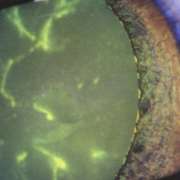GUIDELINE for Gammaherpesvirus infection in cats
GUIDELINE for Gammaherpesvirus infection in cats
GUIDELINE for SARS-Coronavirus (CoV)-2 and cats
The coronavirus (CoV) that causes coronavirus disease 2019 (COVID-19) was first isolated in December 2019, in Wuhan City, Hubei province, China.
GUIDELINE for Feline Morbillivirus infection
The Morbillivirus genus (family Paramyxoviridae) includes important viral RNA pathogens of humans and animals including measles virus, canine distemper virus (CDV), rinderpest virus (globally eradicated in 2011), peste des petits ruminants viruses and viruses affecting marine mammals (Nambulli et al., 2016).
GUIDELINE for West Nile virus infection
West Nile virus (WNV) is a zoonotic mosquito-borne virus belonging to the family Flaviviridae, genus Flavivirus in the Japanese encephalitis antigenic group. It is an enveloped virus containing a single molecule of linear, positive-sense, single-stranded RNA.
GUIDELINE for Poxvirus infections in cats
Cowpox virus has a wide host spectrum including man (zoonosis!) and occurs predominantly in small rodents.
Cats with rodent contact are at risk to become infected.
Skin lesions are predominantly found on the head and paws.
GUIDELINE for Aujeszky’s Disease – Pseudorabies in cats
The natural hosts of ADV are domestic and wild suids. The clinical signs in these animals include respiratory, reproductive and neurological signs, depending on the age of the animal. Like other herpesviruses, ADV produces a latent infection in the host.
GUIDELINE for Feline viral papillomatosis
Papillomaviruses cause cutaneous lesions in man and several animal species, including cats (Munday, 2010). In each host different papillomavirus types exist, which is also true for cats (Munday, 2008).
GUIDELINE for Feline Herpesvirus infection
Feline herpesvirus (FHV), the agent of feline viral rhinotracheitis, is distributed worldwide. The virus belongs to the order Herpesvirales, family Herpesviridae, subfamily Alphaherpesvirinae, genus Varicellovirus.
GUIDELINE for Feline Panleukopenia
Key points
Feline panleukopenia virus (FPV) and the closely related canine parvovirus 2 (CPV-2) can infect and cause severe disease in cats.
FPV is shed in high titers in the faeces and the very stable virions stay infectious in the environment for months.
FPV is very tolerant against many
GUIDELINE for Influenza virus infections in cats
Influenza is a highly contagious, acute infection, usually of the upper respiratory tract, and has been detected worldwide in many vertebrate hosts (Krammer et al., 2018). Feline respiratory diseases caused by influenza viruses appear to be rather rare and usually self-limiting;
GUIDELINE for Feline rabies
Rabies is one of the oldest and most feared diseases of humans and animals – it was recognized in Egypt before 2300 BC and in ancient Greece, where it was well described by Aristotle.
GUIDELINE for Feline immunodeficiency virus
Feline immunodeficiency virus (FIV) is a retrovirus of the genus Lentivirus that is closely related to HIV; however, humans are not susceptible to the cat virus, which occurs in 5 subtypes (clades) worldwide.
GUIDELINE for Feline Infectious Peritonitis
Feline Coronavirus (FCoV) is the causative agent of the serious disease of feline infectious peritonitis (FIP). FCoV is a large spherical enveloped virus with a single stranded RNA genome.Being an RNA virus, FCoV has a high level of genetic variation due to frequent errors during RNA replication.
GUIDELINE for Feline Leukaemia Virus Infection
Feline leukaemia virus (FeLV), a gammaretrovirus of domestic cats, is a member of the Orthoretrovirinae subfamily of retroviruses. It contains a protein core with single-stranded RNA protected by an envelope.
GUIDELINE for Feline calicivirus infection
Feline calicivirus (FCV) is a highly contagious pathogen with a widespread distribution in the feline population.
GUIDELINE for Feline Infectious Peritonitis -copy
Feline Coronavirus (FCoV) is the causative agent of the serious disease of feline infectious peritonitis (FIP). FCoV is a large spherical enveloped virus with a single stranded RNA genome.Being an RNA virus, FCoV has a high level of genetic variation due to frequent errors during RNA replication.
Legal Info
ABCD Europe
The European Advisory Board for Cat Diseases aims to communicate scientific developments in feline infectious diseases, and therewith, to define a code of practice across Europe.















